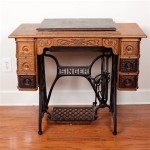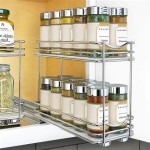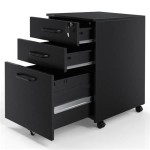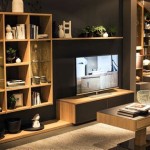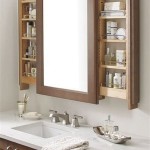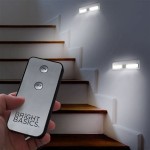Locks For Drawers And Cabinets: A Comprehensive Guide
Locks for drawers and cabinets serve a critical function in both residential and commercial settings. They provide security, privacy, and control over access to valuable items, sensitive documents, hazardous materials, and personal belongings. Selecting the appropriate lock requires careful consideration of factors such as the level of security required, the type of drawer or cabinet, the frequency of use, and aesthetic preferences. This article provides a detailed overview of the various types of locks available, their functionalities, security features, and installation considerations.
Types of Drawer and Cabinet Locks
A diverse range of locks exists to suit different applications and security requirements. Understanding the various types is essential for making an informed decision about which lock is best suited for a particular drawer or cabinet.
Cam Locks: Cam locks are a popular and versatile choice for drawers and cabinets due to their simple design and ease of installation. They operate by rotating a cylindrical cam when the key is turned. The cam engages with a strike plate or the cabinet frame, preventing the drawer or door from opening. Cam locks are typically available in a variety of sizes, finishes, and keying options, including keyed alike (all locks use the same key) and keyed differently (each lock has a unique key). The level of security offered by cam locks is generally considered moderate, making them suitable for applications where basic security is sufficient.
Pin Tumbler Locks: Pin tumbler locks are a more secure option than cam locks, offering a higher level of resistance to picking and forced entry. These locks utilize a cylinder containing a series of pins that must be aligned correctly by the key in order to allow the cylinder to rotate and unlock the mechanism. Pin tumbler locks are commonly found in higher-security cabinets and drawers that require a greater degree of protection. The complexity of the pin configuration determines the security level of the lock, with locks containing more pins offering greater resistance to unauthorized access.
Disc Detainer Locks: Disc detainer locks offer a higher level of security compared to pin tumbler locks. Instead of pins, they utilize rotating discs that must be aligned in a specific order to unlock the mechanism. This design makes them highly resistant to picking and manipulation. Disc detainer locks are often used in applications where maximum security is paramount, such as securing valuable items or confidential documents.
Combination Locks: Combination locks eliminate the need for keys, relying instead on a numerical or alphabetical combination to unlock the mechanism. These locks are convenient for users who prefer not to manage keys, and they can be particularly useful in environments where multiple people need access to the same drawer or cabinet. Combination locks are available in both mechanical and electronic versions. Mechanical combination locks require users to manually rotate dials to the correct combination, while electronic combination locks utilize a keypad or touchscreen for input. The security level of combination locks depends on the number of digits or characters in the combination and the complexity of the locking mechanism.
Magnetic Locks: Magnetic locks utilize a strong magnetic force to keep the drawer or cabinet closed. They consist of a magnetic lock body mounted on the inside of the cabinet and a metal strike plate attached to the drawer or door. A special key, typically containing a magnet or magnetic pattern, is required to disengage the magnetic force and allow the drawer or door to open. Magnetic locks are often used in childproofing applications to prevent young children from accessing potentially dangerous items in drawers and cabinets. They also offer a clean and discreet aesthetic, as the locking mechanism is hidden from view.
Electronic Locks: Electronic locks offer advanced security features and convenience, often incorporating features such as keypads, biometric scanners, or proximity card readers. These locks provide a high level of control over access, allowing administrators to easily add or remove users, track access logs, and set time-based restrictions. Electronic locks are commonly used in commercial and institutional settings where security and access control are critical. They often require a power source, either through batteries or a direct electrical connection.
Factors to Consider When Choosing a Lock
Selecting the right lock for a drawer or cabinet involves several considerations to ensure that the chosen lock meets the specific security needs and functional requirements of the application.
Security Level: The primary consideration is the level of security required. For drawers and cabinets containing valuable items or sensitive information, a higher-security lock such as a pin tumbler, disc detainer, or electronic lock is recommended. For applications where basic security is sufficient, a cam lock or magnetic lock may be adequate. Evaluating the potential risks and the value of the contents being secured is crucial in determining the appropriate security level.
Type of Drawer or Cabinet: The type of drawer or cabinet also influences the choice of lock. The thickness of the material, the construction of the frame, and the presence of pre-existing mounting holes all affect the type of lock that can be installed. For example, thin drawers may require a cam lock with a short cylinder length, while heavier cabinets may require a more robust locking mechanism.
Frequency of Use: The frequency with which the drawer or cabinet will be opened and closed is another important factor. For drawers and cabinets that are accessed frequently, a lock that is easy to operate and durable is essential. Cam locks and combination locks are often suitable for high-traffic applications, while electronic locks can provide added convenience and access control features. Consider the long-term wear and tear the lock will experience.
Aesthetic Considerations: The aesthetic appearance of the lock should also be taken into account, particularly in residential or office environments where the overall design and décor are important. Locks are available in a variety of finishes, including chrome, brass, nickel, and black, to complement the surrounding hardware and furniture. Choosing a lock that blends seamlessly with the existing aesthetic can enhance the overall visual appeal of the space.
Existing Hardware: It is important to consider any existing hardware already present on the drawer or cabinet, such as handles, knobs, or hinges. The lock should be compatible with the existing hardware in terms of both functionality and aesthetics. In some cases, it may be necessary to replace or modify the existing hardware to accommodate the new lock.
Budget: The budget available for the lock installation is also a factor to consider. Locks vary widely in price, depending on their security level, features, and materials. Setting a budget upfront can help narrow down the options and ensure that the chosen lock provides the best value for the money.
Installation and Maintenance
Proper installation is essential for ensuring that the lock functions correctly and provides the intended level of security. Depending on the type of lock and the construction of the drawer or cabinet, installation may require drilling, cutting, or other modifications. It is important to carefully follow the manufacturer's instructions and use the appropriate tools for the job. In some cases, it may be advisable to hire a professional locksmith to install the lock, particularly for more complex locking mechanisms or when dealing with valuable or sensitive items.
Installation Steps: * Preparation: Gather all necessary tools and materials, including the lock, mounting hardware, drill, screwdrivers, and measuring tape. * Marking: Carefully mark the location where the lock will be installed, taking into account the dimensions of the lock and the placement of the strike plate. * Drilling: Drill any necessary holes for mounting the lock and strike plate, ensuring that the holes are properly aligned and sized. * Mounting: Securely mount the lock and strike plate using the provided screws or bolts. * Testing: Test the lock to ensure that it functions smoothly and that the drawer or cabinet opens and closes properly.
Regular maintenance is also important for prolonging the life of the lock and ensuring its continued functionality. This includes lubricating the locking mechanism with a dry lubricant to prevent rust and corrosion, cleaning the lock with a soft cloth to remove dirt and debris, and periodically checking the mounting hardware to ensure that it is securely fastened.
Maintenance Tips: * Lubrication: Apply a dry lubricant to the locking mechanism every few months to keep it working smoothly. * Cleaning: Clean the lock regularly with a soft cloth to remove dirt and debris. * Inspection: Periodically inspect the mounting hardware to ensure that it is securely fastened. * Replacement: Replace the lock if it becomes damaged or worn, or if it no longer provides the desired level of security.
By carefully considering these factors and following proper installation and maintenance procedures, individuals and businesses can effectively secure their drawers and cabinets and protect their valuable belongings and sensitive information.

Invisible Cabinet Locks W Magnetic Key

6 Pack Child Proof Locks For Cabinet Doors Pantry Closet Wardrobe Cupboard Drawers 3m No Drilling Safety Cabinets And Baby Proofing Lock Walmart Com

Prime Line 9 16 In Diecast And Steel Stainless Finish Drawer Cabinet Lock U 9943 The Home

Cabinet Option Door Or Drawer Lock

Product Type Safety Locks Upgraded Bendable Plastic Childproof Latches

Ml2 2 Drawer Multi Bar

Regalo Home Safety Magnetic Cabinet And Drawer Lock 6133 W At Lowes Com

Prime Line U 9941 Drawer And Cabinet Lock

Jesot Child Safety Lock Kit For Cabinets And Drawers White 6 Piece

Our Favorite Baby Proofing Tools Reviews By Wirecutter

